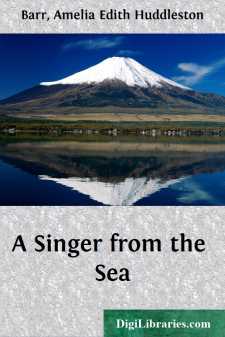Categories
- Antiques & Collectibles 13
- Architecture 36
- Art 48
- Bibles 22
- Biography & Autobiography 813
- Body, Mind & Spirit 142
- Business & Economics 28
- Children's Books 15
- Children's Fiction 12
- Computers 4
- Cooking 94
- Crafts & Hobbies 4
- Drama 346
- Education 46
- Family & Relationships 57
- Fiction 11828
- Games 19
- Gardening 17
- Health & Fitness 34
- History 1377
- House & Home 1
- Humor 147
- Juvenile Fiction 1873
- Juvenile Nonfiction 202
- Language Arts & Disciplines 88
- Law 16
- Literary Collections 686
- Literary Criticism 179
- Mathematics 13
- Medical 41
- Music 40
- Nature 179
- Non-Classifiable 1768
- Performing Arts 7
- Periodicals 1453
- Philosophy 64
- Photography 2
- Poetry 896
- Political Science 203
- Psychology 42
- Reference 154
- Religion 513
- Science 126
- Self-Help 84
- Social Science 81
- Sports & Recreation 34
- Study Aids 3
- Technology & Engineering 59
- Transportation 23
- Travel 463
- True Crime 29
A Singer from the Sea
Description:
Excerpt
CHAPTER I.
DENAS PENELLES.
“‘Tell me, my old friend, tell me why
You sit and softly laugh by yourself.’
‘It is because I am repeating to myself,
Write! write
Of the valiant strength,
The calm, brave bearing
Of the sons of the sea.’”
––French Rowing Song
“And that is why I have written this book
Of the things that live in your noble hearts.
You are really the authors of it.
I have only put into words
The frank simplicity of your sailor life.”
––Guillaume de la Laudelle.
From Padstow Point to Lundy Race is one of the wildest and grandest portions of the Cornish coast, and on it there is always somewhere a tossing sea, a stiff breeze above, and a sucking tide below. Great cliffs hundreds of feet high guard it, and from the top of them the land rolls away in long ridges, brown and bare. These wild and rocky moors, full of pagan altars, stone crosses, and memorials of the Jew, the Phœnician, and the Cornu-British, are the land of our childhood’s fairy-folk––the home of Blunderbore and of Jack the Giant Killer, and the far grander
“Fable of Bellerus old,
And the great vision of the Guarded Mount.”
But it is the Undercliff which has the perennial charm for humanity, for all along its sloping face there are bewildering hummocks and hollows, checkered with purple rocks and elder-trees. Narrow footpaths curve in and out and up and down among the fields and farms, the orchards and the glimmering glades, and there the foxgloves grow so tall that they lift their dappled bells level with the eyes.
Further down are queer, quiet towns, hundreds of years old, squeezed into the mouths of deep valleys––valleys full of delicate ferns and small wild roses and the white heath, a flower peculiar to the locality. And still lower––on the very shingle––are the amphibious-looking cottages of the fishermen. They are surrounded by nets and boats and lobster-pots. Noisy children paddle in the flowing tide, and large, brown, handsome women sit on the door-steps knitting the blue guernsey shirts and stockings which their husbands wear.
Such a lonely, lovely spot is the little village of St. Penfer. It is so hidden in the clefts of the rocks that unless one had its secret and knew the way of its labyrinth down the cliff-breast it would be hard to find it from the landward side. But the fishermen see its white houses and terraced gardens and hear the sweet-voiced bells of its old church calling to them when they are far off upon the ocean. And well they know their cottages clustered on the shingle below, and all day they may be seen among them, mending their boats, or painting their boats, or standing with their hands in their pockets looking at their boats, fingering the while the bit of mountain ash which they carry there to keep away ill-luck.
John Penelles was occupied on the afternoon of that Saturday which comes between Good Friday and Resurrection Sunday. His boat was rocking on the tide-top and he seemed to be looking at her....












